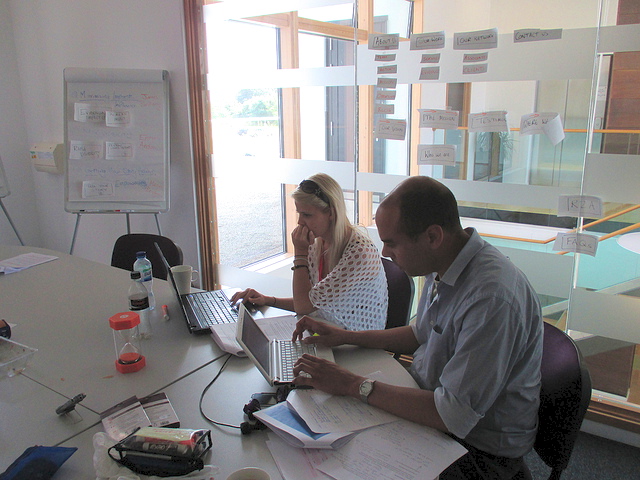Last year was a great one for CommsConsult. But, boy, it was exhausting! We carried out over a dozen projects including our first for a UK academic market; worked in contexts both familiar (Zimbabwe, Kenya, Egypt) and new (Pakistan, Indonesia, Malaysia); handed back to the Department for International Development the @DFID_Research twitter account that we’d grown from nothing to 12000 followers, assembled a super-smart team of mentors to work with Think Tanks across Africa; and bought the beautiful house in which our Zimbabwe office is based, as a springboard to the company’s further growth in Africa.
Phew…
 We’re always looking out for new and exciting ways to communicate, both for ourselves and our clients. And there seems to be no end to the diversity of platforms and digital techniques available to do this. But (and is this a sign of my age?) the enormity of choice seems to me to present both an opportunity and a threat to organisations like ours. We’re in the business of advising clients on what communication platforms and processes are fit for purpose: but how can we possibly keep on top of the latest techniques and their applications?
We’re always looking out for new and exciting ways to communicate, both for ourselves and our clients. And there seems to be no end to the diversity of platforms and digital techniques available to do this. But (and is this a sign of my age?) the enormity of choice seems to me to present both an opportunity and a threat to organisations like ours. We’re in the business of advising clients on what communication platforms and processes are fit for purpose: but how can we possibly keep on top of the latest techniques and their applications?
This thought could keep me awake most nights. It doesn’t for four reasons. First, I’m surrounded @commsconsultltd by smart young people whose job it is to keep their eyes peeled for new smart ideas.
Second, we’re in touch with an enormous virtual community who keep us constantly engaged and enthused about their use of the latest shiny button digital toys via twitter 24/7.
Third, I’m happily one of those people who can sleep for eight solid hours, even if standing in a cupboard.
And finally, the basic principles of strategic communication still apply.
So, even if I’m not personally completely clear how Instagram (75m daily users January 2014) is single-handedly going to eliminate third world poverty; cannot explain how Tableau can help you blow people away with its data visualisation power; and am left bewildered how to configure my new iPhone (I have been for ten years a die-hard Blackberry user and am SO SORRY to have emigrated from that land…), I do know that some basic principles still apply: here are four for 2014:
- If you are not clear about what it is you’re trying to communicate, to whom and why, your communications and engagement are likely to fail.
- If you ‘go through the motions’ of developing a Communication Strategy, a Research Uptake Strategy, a Theory of Change (tick whichever applies) because the donor requires it, but then leave the document on a shelf and do not ever look at it again, you will achieve very little (apart from keeping busy).
- If you do not spend time understanding the policy context and the landscape in which you’re working, your chances of informing or influencing anything or anyone are remote.
- Don’t let the tools determine the strategy. However fun and glamorous and popular a tool appears (whether it’s a new gizmo/device/platform/approach), you must be very sure (and be honest now…) that it’s being used because it is ‘fit for purpose’ and not just because everyone else is using it/it’s free/ it comes as an app on your phone/there’s funding available for it….
My colleague Betty found and shared this no-nonsense overview of EIGHT IMPORTANT THINGS to consider when delivering remote on-line learning. It’s great common sense. Let’s promise to think through all of our strategic communication choices with the same pragmatism for clients throughout the coming year.
Happy New Year!

Leave a Reply